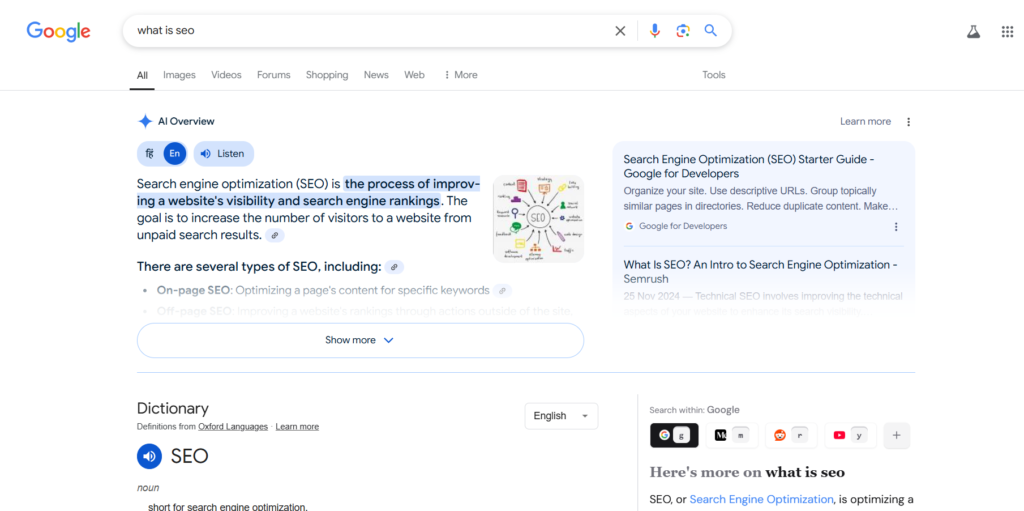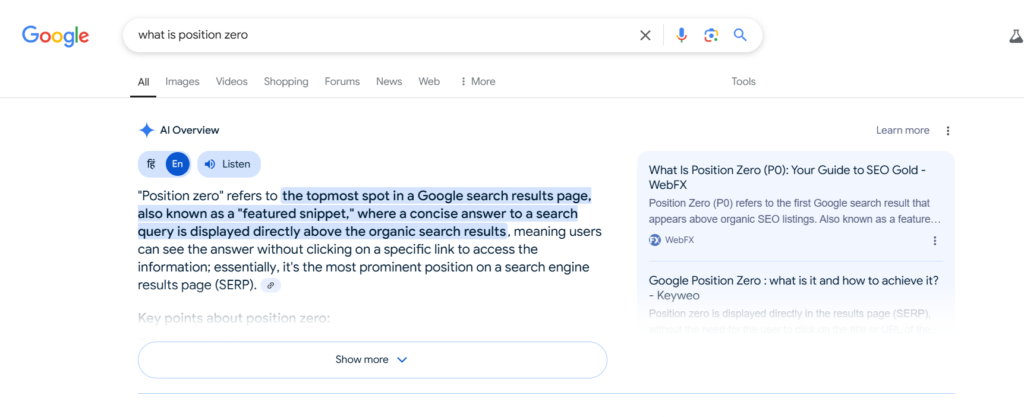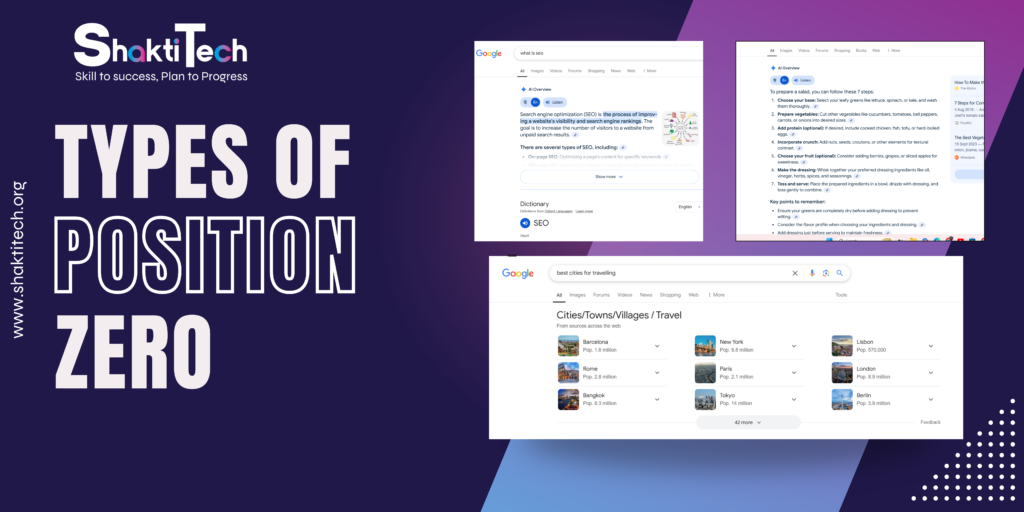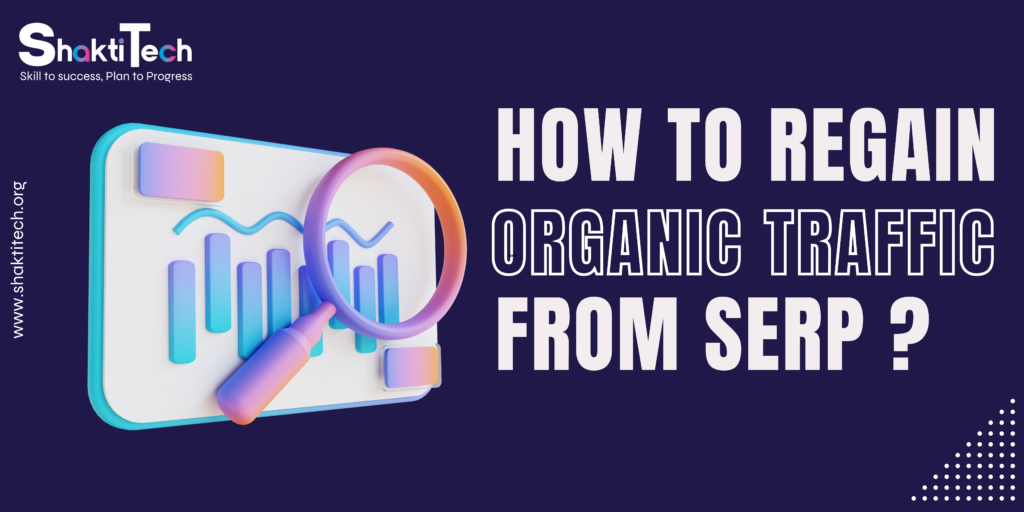
Table of Contents
The digital world is changing rapidly, and businesses need to stay ahead and up-to-date to succeed in SEO. Instead of just learning SEO, 2025 requires us to adapt the new SEO strategies also.
With Google’s recent updates reshaping the SERP, website owners and SEO strategists are facing challenges.
This blog will help you that how to use SEO strategies to improve your search ranking.
What is SERP and Why Does It Matter for SEO Ranking in 2025?
The search engine result page (SERP) is the first point of interaction between the users and the information they seek. It includes organic listings, ads, featured snippets, and various other elements.
To explore this concept further, check out our detailed blog on SERP analysis.
Here’s an example of what a SERP can look like.

Staying ahead to maintaining the SERP layout is crucial for maintaining visibility and traffic.
Major Changes to SERP Structure.
Recent updates by Google symbolize a shift in how information is presented in search results. These changes are highly influenced by extensive AI technologies, such as Google, Gemini, and Bing AI. The implications for SEO strategies are significant.
- Increased Quality of Google Ads: Up to four ads are now visible, taking up more space than before.
- Introduction of Google AI Overviews (AIO): This new feature now dominates the SERP above organic results, often pushing traditional ranking further down.
- Position Zero: Featured snippets, also known as position 0, are becoming increasingly harder to track due to these dynamic changes.
The classic SERP structure has been destabilized, requiring urgent modifications to existing practices.
What is Position 0?
Position 0 refers to featured snippets that appear above all other search results on the SERP. These snippets deliver concise answers to user queries, which increases the visibility and click-through rates for the sites featured.

Types of Featured Snippets:
- Paragraph Snippets: Answer presented in a short paragraph (e.g., “What is SEO?”)
- List Snippets: Numbered or bullet points (e.g., “Steps to improve website speed”)
- Table Snippets: Data-driven comparisons (e.g., “SEO tool price comparison”)
- Video Snippets: Featured videos answering a query concisely

Why it’s becoming harder to attain position Zero?
With the rise of AI-generated content in search results, the space for position 0 is becoming increasingly competitive.
Rank-tracking methods are finding it difficult to capture accurate data, resulting in decreased visibility for many websites. Here’s are some reasons why this happening:
- Dynamic Content: Ai-generated answers often alter the SERP layout in unexpected ways, making it challenging to analyze data effectively.
- Personalization: Search results are now highly personalized according to user behavior, geography, and device type, complicating strategies for constant rank tracking.
- New Layout Dynamics: The new SERP layout often leaves position 1 far less desirable than in the past, with organic click-through rates dropping gradually -down to 11% from as high as 33%.
Overcoming the Challenges of AI-Driven SERP Changes
The Impact of AI on Rank Tracking
Rank tracking has become increasingly complex with Google’s algorithms and the introduction of advanced anti-bot measures.
Marketers and SEO professionals face new challenges that demand innovative approaches to monitor and analyze search engine performance effectively.
- Lazy-Loading Content: One of the major challenges that affects rank tracking is the lazy loading of content on search engine pages. The approach of web design allows web pages to load content incrementally based on user interaction, such as scrolling or clicking buttons for the information.
This enhances user experience by reducing initial load times and presenting data more quickly to the user, it complicates the rank tracking process. - Google’s Anti-Bot Measures: Google has enhanced its anti-bot measures in response to the challenge caused by automated tools scrapping the data from SERPs.
The main goal of this new advancement is identifying and blocking non-human traffic that attempts to corrupt search data and preserve the data for real users.
Strategies to Adapt to the New SEO Environment
As we all know, understanding Google’s search algorithms is very crucial for SEO, and its algorithms become increasingly AI-driven, traditional SEO is no longer enough to maintain a strong visibility for a brand.
Marketers need to rethink their strategies by focusing on dynamic content, AI engagement, and SERP trends. To stay ahead, the major factor is adaptability. Here’s how you can refine your approach:
- Answer Engine Optimization: Search is shifting from traditional keyword-based training to AI-powered responses. To stay relevant, Answer Engine Optimization is crucial.
a. Creating FAQ-style content that directly answers common queries.
b. Implementing structured data and schema markup to help search engines understand your content better.
c. Using conversational, natural language that connects with AI-driven search preferences - Utilized Improved Tracking Tools: In today’s world, it’s essential to monitor AI-influential search trends and SERP updations.
a. Invest in AI-driven analytic tools like Bright Data, Semrush, or Ahrefs to analyze the position Zero rankings and SERP features.
b. Monitor real-time SERP changes to understand how Google’s AI impacts your content’s visibility.
c. Analyze behavioral Data to filter content based on users engaging the most. - Focus on Position Zero Metrics: Position Zero remains the most important section in the SERP layout. Securing and maintaining, it requires continuous optimization.
a. Track engagement metrics such as click-through rates (CTR), impressions, and user dwell time on featured snippets.
b. Test Content Formats: Lists, tables, and direct answers to check which content format performs best for position Zero.
c. Update Content frequently: To ensure it remains relevant and follows Google’s fresh criteria.
How to Gain Traffic from Position 0 ?
Securing Position 0 and regaining lost traffic from SERP requires a strategic, AI-adaptive approach. With AI-generated search results, zero-click searches, and ranking factors, SEO methods are no longer enough.
Position 0 is the prime place of Goggle’s search results, appearing above all other websites. Here’s how you can optimize your content to secure this spot for your content.
- Identify Featured Snippet Opportunities: Not all search queries are valid for the feature snippets. Need to focus on high-intent, informational queries by:
a. Use SEO tools like Semrush, Ahrefs, or Google Search Console to identify queries where your website page ranks in the top 5.
b. Analyze competitor snippets and optimize your content to provide clear and more concise answers.
c. Targeting question-based queries (e.g. “How does SEO work in 2025?“) with proper responses. - Optimize content for direct, concise Answers: Google prefers content that answers questions quickly. To increase your chances of being featured.
a. Place the direct answers within the first 40-60 words of your content.
b. Structured content with proper headings tags and bullet points for better readability.
c. Use Short, engaging statements that directly address the search query. - Use Different Snippet Formats: Google’s featured snippets come in multiple formats. It is important to optimize your content frequently.
a. Paragraph Snippets: Provide a 40-60 word summary at the beginning of the answer.
b. List Snippets: Use numbered or bullet point lists for step-by-step guides.
c. Table Snippets: Organize the data in tables for comparison style problems.
d. Video Snippets: Ensure your YouTube videos have relevant content and sections. - Schema Markup & Structured Data: Google relies on structured data to understand content relevancy. To do this, Make sure to implement.
a. FAQ Schema for question-based queries.
b. How to Schema for step-by-step instructions.
c. Video Schema to improve the visibility of the content. - Continuously Update & Optimize Content: Google usually refreshes snippets, so make sure that content remains fresh and updated:
a. Optimize the content based on the user intent.
b. Improve Readability by splitting the long paragraphs into small sections.
c. Analyze Performance in Google Search Console to track snippet engagement.
How to Regain Organic Traffic from SERPs ?
Most of the websites have seen a drop in organic traffic because of Google’s AI-driven search experience.
However, this can be resolved by adapting new SERP structures and user behaviors, businesses can reclaim visibility and drive more traffic.

- People Also Ask for Boxes: The PAA section appears in nearly every search result and offers a great opportunity for visibility. To rank here.
a. Identify common follow-up questions according to your niche.
b. Create concise, clear answers for PAA.
c. Update your content to change PAA questions over time. - Optimize content for Local SEO & Google My Business: If you are targeting a local audience, refining your Google Business Profile can help regain local traffic.
a. Make sure that details, hours, and services are updated.
b. Encourage customers to review to improve credibility.
c. Use navigational keywords in descriptions and posts. - Improve Click-Through-Rates with Better Meta Optimization: If you rank well, low CTR can affect traffic. Optimize your title tags and meta descriptions for clicks.
a. Use Power words like “Ultimate Guide”, “Proven Strategies”,
b. Include numbers, brackets, and questions (e.g., “SEO in 2025)
c. Make sure the meta descriptions generate curiosity.
Conclusion:
SEO in 2025 is no longer just about ranking higher’s also about understanding AI-driven search, optimizing the content for position 0, and adapting the the changes. With Google’s increasing updations, traditional tactics won’t be longer enough to maintain visibility.
While securing Position O and regaining organic traffic may seem challenging staying focused, and optimizing content according to user intent for the visibility will keep your site ahead of others.
SEO is an unstoppable journey those who innovate and adapt will be the ones who remain ahead.
So, is your SEO ranking 2025-ready? The time to act now!
FAQs
What is SEO ranking, and why should I care about it?
SEO ranking refers to the position a website holds in search engine results pages (SERPs) for specific keywords or phrases. A higher SEO ranking is crucial because it increases a website’s visibility, driving more organic traffic and potential customers.
How can I improve my SEO ranking in 2025?
To improve SEO ranking in 2025, focus on adapting the new algorithms by creating high-quality, relevant content, optimizing for Position Zero, utilizing structured data, and employing AI-driven analytics tools to track your performance.
What tools can I use to track my SEO ranking effectively?
Effective tools for tracking SEO ranking include Google Search Console, Semrush, Ahrefs, and Bright Data. These tools help analyze Position Zero rankings, monitor SERP changes, and evaluate content performance.
Can answering common questions improve my SEO ranking?
Yes, creating FAQ-style content that answers common queries can improve SEO ranking by addressing user intent directly. This approach increases the likelihood of appearing in featured snippets or “People Also Ask” sections in SERPs.
What role does meta optimization play in SEO ranking?
Meta optimization is crucial for improving SEO ranking as it enhances click-through rates. Well-crafted title tags and meta descriptions can intrigue users and encourage them to click on your link over others in SERPs.

Leave a Reply